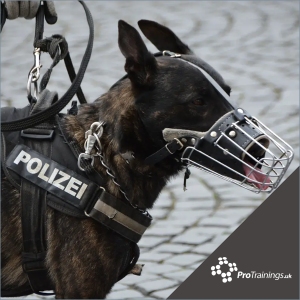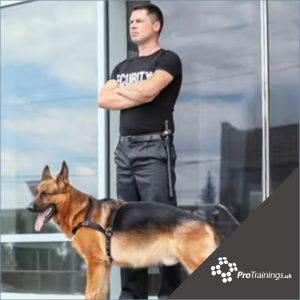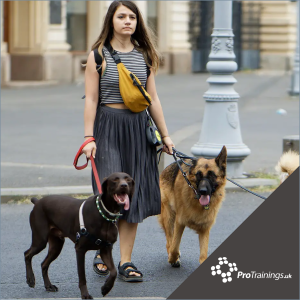It’s a well-known fact that some older dogs go on to develop arthritis. It’s less well-known that arthritis can actually impact any breed, at any age or size.
For those working with dogs, being aware of the early signs and acting quickly could make a huge difference in alleviating their pain and helping them enjoy a good quality of life. An arthritis diagnosis doesn’t have to change who they are.
The facts about canine arthritis
Arthritis will affect 40% of dogs at some point in their life. Many dog owners may see it as an inevitability of growing older – after a life of running and playing, we perhaps expect our pets to slow down as they mature. Like with us humans, arthritis is a progressive disease marked by joint inflammation, causing pain, swelling and sometimes severe disability. Unlike in humans however, arthritis in dogs can often start at a young age and can be very common.
Here are some of the facts to be aware of about arthritis in dogs:
- It is the most common cause of lameness in dogs
- Larger dog breeds (such as Dobermans, Labradors and Golden Retrievers) are most vulnerable, but arthritis can affect any breed
- Arthritis can affect dogs at any age, including those in their younger years
- Arthritis impacts the whole body. In dogs, the most commonly affected joints are the hips and elbows, however any articulating joint can be affected and can cause severe pain
While the condition is incurable, the pain linked to arthritis in dogs can be remedied and early intervention and care can play a huge role in relieving discomfort.
Being conscious of the signs of arthritis, whatever the age of the dogs you work with, is key to spotting early indicators and helping the owner take action as soon as possible. No matter how much time we spend around dogs in our working lives, we can’t always understand how they’re feeling and so it’s up to us to be vigilant and, where needed, guide dog owners to expert vet care.
The known and lesser-known symptoms to watch out for
While owners spend the most time with their dogs and are ultimately responsible for their health, I never underestimate the crucial role sitters, breeders and groomers play in spotting symptoms of pain or illness. When it comes to canine arthritis, dog walkers and trainers could be the first to notice the signs.
Before you set foot out of the door, there are telltale signs that a dog may be experiencing discomfort. Stiffness when they get up from resting or a reluctance to get going where they would normally bound out the door may hint that they’re experiencing some pain. During your walk, the dog may seem slower or more lethargic. Despite being keen to experience the outdoors, they may show difficulty with climbing steps, slopes or jumping. If you notice this on a walk, in the first instance, it’s important not to force the dog beyond their limit. Often our animals like to please us and can be known to push through their pain when excited. Let the dog set the tone of the walk if you’re unsure about their condition and keep a close eye on them – as they always do on you!
The most obvious signs of arthritis may be when a dog is on the move, but there are still signs for those who work with dogs as sitters and groomers. Whilst resting, a dog may lick at its joints or paws in an attempt to soothe pain. This is a much lesser-recognised symptom of arthritis and one often missed by owners – while 73% of UK dog owners said they would be concerned to see their dog limping, less than one-third said they would be concerned if they saw him licking his paws (25%) or joints (30%).
You may also notice the dog is more sensitive or vocal to the touch, particularly around the joints, which is worth bearing in mind while trimming their legs or clipping their nails. Much like cats, dogs may also withdraw from activity, opting to hide or shelter in an unusual place to nurse their pain. In the worst instances, dogs may show aggression, often as a result of sudden pain, possibly even baring their teeth or attempting to bite. This can be unsettling, especially for dogs you know to be calm and loving, but a drastic change in behaviour is one of the clearest signs that something is not right.
Top tips for dog professionals who spot these signs
Dogs can of course experience pain for a number of reasons, but as with most conditions, the best course of action is early diagnosis. It may even be the case that signs of early onset arthritis are clearer for a younger dog, if the shift from their normal, bouncy personality is more apparent.
If the dog seems in pain or discomfort while you’re caring for them, don’t force them to get up and about. Offer them a calm and safe space, away from the hustle and bustle of other dogs or people and speak to the owner about seeking expert vet advice. While it is normal to be anxious about raising concerns, remember that if arthritis is the cause, their pain can often be managed, and vet support can help the dog get back to its normal self. Even if you’re unsure, suggesting the owner gets in contact with a vet may highlight symptoms you’ve overlooked or calm your nerves knowing that you’ve had an expert second opinion.
Working with dogs can be both rewarding and challenging. Spending regular time with them means we often get to know and bond with a dog, so potential health issues are worrying for us, even if we aren’t their owner. As a professional, the best thing we can do is pay close attention to any unusual behaviour, have a conversation with the owner to raise any concerns immediately and always encourage them to seek vet attention. Remember, arthritis pain impacts pets both physically and emotionally, but with expert help, dogs can still live an active, comfortable good quality of life.

Dr Edwina Gildea qualified as a Veterinary Surgeon from University College Dublin in Ireland and has worked as a vet for both livestock and companion animals in practices across Ireland and Scotland. She joined Pfizer Animal Health in 2006 as a Veterinary Consultant and since then has gone on to take up a variety of medical roles leading to her current position as Director of Veterinary Operations at Zoetis UK, the world’s leading animal health company.
Over the past 18 years, Edwina has been involved in Research & Development, Market development, Outcomes Research and medical teams at national and international level, pioneering 16 innovative companion animal health solutions. Throughout her career, pain management and quality of life have been her passions and key areas of focus and she is committed to working with dog owners, breeders, sitters and walkers, as well as vets, to make sure signs of pain are spotted and managed early.








